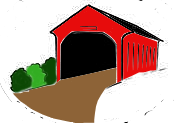
Donovan Den Designs
Coursework
Keeping current in the world of multiple devices, software development and information technology is necessary in this day and age. Here are some of the courses I’ve taken recently along with projects that I did as homework assignments. Have fun with them!
Web GIS: Technologies and Applications with Pinde Fu
CSCI E-8 Harvard University Extension School 2014
Web GIS, the combination of the web and geographic information systems (GIS), is a new and promising field. It has extended the power of GIS from local servers to the cloud, and put online maps and geospatial intelligence in the offices of millions and the hands of billions. This course aims to provide students with the essential knowledge needed for managing web GIS projects, teach students the latest geospatial cloud technologies needed for building modern web GIS applications, and inspire students with real world case studies. This course focuses on Esri's geospatial cloud, the most widely used GIS platform in government and business information systems. Technologies taught in this course include cloud GIS (ArcGIS Online and ArcGIS Enterprise), browser-based web apps (ArcGIS web app templates, Story Maps, Web AppBuilder, Experience Builder, and Operations Dashboard), mobile GIS apps (Collector, Survey123, QuickCapture, Explorer, Workforce, and Tracker), 3D web scenes, imagery services, and spatial analysis. Internet of things, big data analysis, virtual reality (VR), augmented reality (AR), and machine learning are also discussed in the context of web GIS.
Exposing Digital Photography with Dan Armendariz
DGMD E-10 Harvard University Extension School 2014
This course explores storytelling through the genres of photojournalism, documentary, and art photography. We dig into the technical foundations and techniques of digital photography with the goals of enabling students to further control their work and experiment in new ways and to develop a deeper and broader understanding of photographic technique. The course investigates cutting edge technology in photography, as well as the variety of formats available. The course constantly refers to the software tools we use to ensure reliable workflow and archive management. It addresses advanced color management as well as the science of converting images from color to black and white. Through lectures, hands-on assignments, and critiques, students expand their understanding of digital photography while exploring their creativity to broaden the possibilities and improve the quality of their photographs. Storytelling with photography dominates; the goal of the course is for each student to produce a body of work or a photographic essay. The art of editing their own work is a key learning goal. We dive into portraiture outside of the studio, shooting stories involving people and discuss how to get the picture when everyone does not want you to. For the art aspect, this is a bridging course between "accidental" art while doing documentary work and "art for art's sake." We look at various types of photography that are defined, or self-defined, as art.
Multimedia Communication:
Digital Storytelling with Marlon Kuzmick
EXPO E-48 Harvard University Extension School 2013
Images now flood our writing lives, whether on the pages of newspapers, magazines and academic journals, or on the screens through which we access Facebook, Flickr, and YouTube. It now appears clear that visual literacy—the ability to "read" and "write" with images—will soon become as important as literacy proper. In this course, we learn how to decode the arguments that images make and make our own arguments with images. We study the emerging academic field of visual rhetoric as well as the examples of it we find in the media to become more effective visual communicators ourselves: we learn to think and to persuade with images. Students complete three projects, ranging from PowerPoint presentations to documentary films that analyze the rhetoric of an argument. The course is helpful to anyone interested in becoming a writer in the age of multimedia (and any of us with a blog or a Facebook profile is now such a writer) as well as those interested in related fields such as web design, film and videomaking, and business communication. Prerequisites: students need access to some sort of image-producing device: a camera, a scanner, or video camera. Local students have access to Mac software in the classroom. Online students using PCs need to have access to a slide presentation program (for example, PowerPoint), a video editing program (for example, Windows Movie-Maker), and an image manipulation program (for example, Photoshop Elements).
Understanding & Developing Multimedia with Jen Kramer & Rob Graham
CSCI E-14 Harvard University Extension School 2012
This course provides students with a hands-on exploration of the world of dynamic media production through the creation of interactive software programs that combine media elements like graphics, audio, video, and interactivity; and focuses on designing and planning projects with the needs and expectations of end users in mind. Through an exploration of Adobe Flash CS5 Professional, HTML5, CSS3, JavaScript and jQuery, students learn how to design, plan, and create dynamic and interactive web-based programs designed to entertain, educate, and inform others. This course also includes exploration of graphic interface design and development, audio and video editing tools, and an overview of the ActionScript 3.0, the Flash scripting language.
Building Dynamic Websites with David Malan
CSCI S-75 Harvard Summer School 2010
Today's websites are increasingly dynamic. Pages are no longer static HTML files but instead generated by scripts and database calls. User interfaces are more seamless, with technologies like Ajax replacing traditional page reloads. This course teaches students how to build dynamic websites with Ajax and with Linux, Apache, MySQL, and PHP (LAMP), one of today's most popular frameworks. Students learn how to set up domain names with DNS, how to structure pages with XHTML and CSS, how to program in JavaScript and PHP, how to configure Apache and MySQL, how to design and query databases with SQL, how to use Ajax with both XML and JSON, and how to build mashups. The course explores issues of security, scalability, and cross-browser support and also discusses enterprise-level deployments of websites, including third-party hosting, virtualization, colocation in data centers, firewalling, and load-balancing.
- Project 0: PizzaML - Create a website to display the menu for the Three Aces Eatery and allow the user to choose menu items and place an order. This project uses XML and PHP as well as XHTML and CSS. Requirements. Code.
- Project 1: C$75 Finance - Create a website to require login/registration with an email address. Give the new user $10,000 (virtually) to invest in stocks and provide them with real-time stock quotes. This project uses MySQL, PHP and client-side javascript as well as XHTML and CSS. Requirements.
- Project 2: C$75 Finance 2.0 - Create a website to retrieve a real-time stock quote, update it every ten seconds, graph the stocks historical trading prices over a variety of time periods, and show links to news articles about the company. This project uses AJAX, Javascript, XML and PHP as well as XHTML and CSS. Requirements.
Introduction to Web Content Management Systems
Site Development with Rob Graham
CSCI E-30 Harvard Extension School 2010
In a rapidly changing world, the need for online publishers to keep up with the needs and expectations of their site visitors is paramount. Today, many web publishers use content management systems (CMS) to allow them to instantly and dynamically update web pages and properties as new content becomes available so that every visit to a site is engaging, informative, and meaningful. This course explores the use of open source web-based content management systems such as Ning, Wordpress, Joomla, and others to create dynamic and flexible web sites and landing pages. Participants explore the fundamentals of planning dynamic websites, CMS database management, developing CSS-controlled site templates, and creating database driven websites through the planning and creation of their own topic-based sites.
- Facebook Fan Page: Harness the Wind!
- Social Media Site using Ning: Donovan-Cook Family Gathering
- Cascading Stylesheets: We Love 2 Cook













